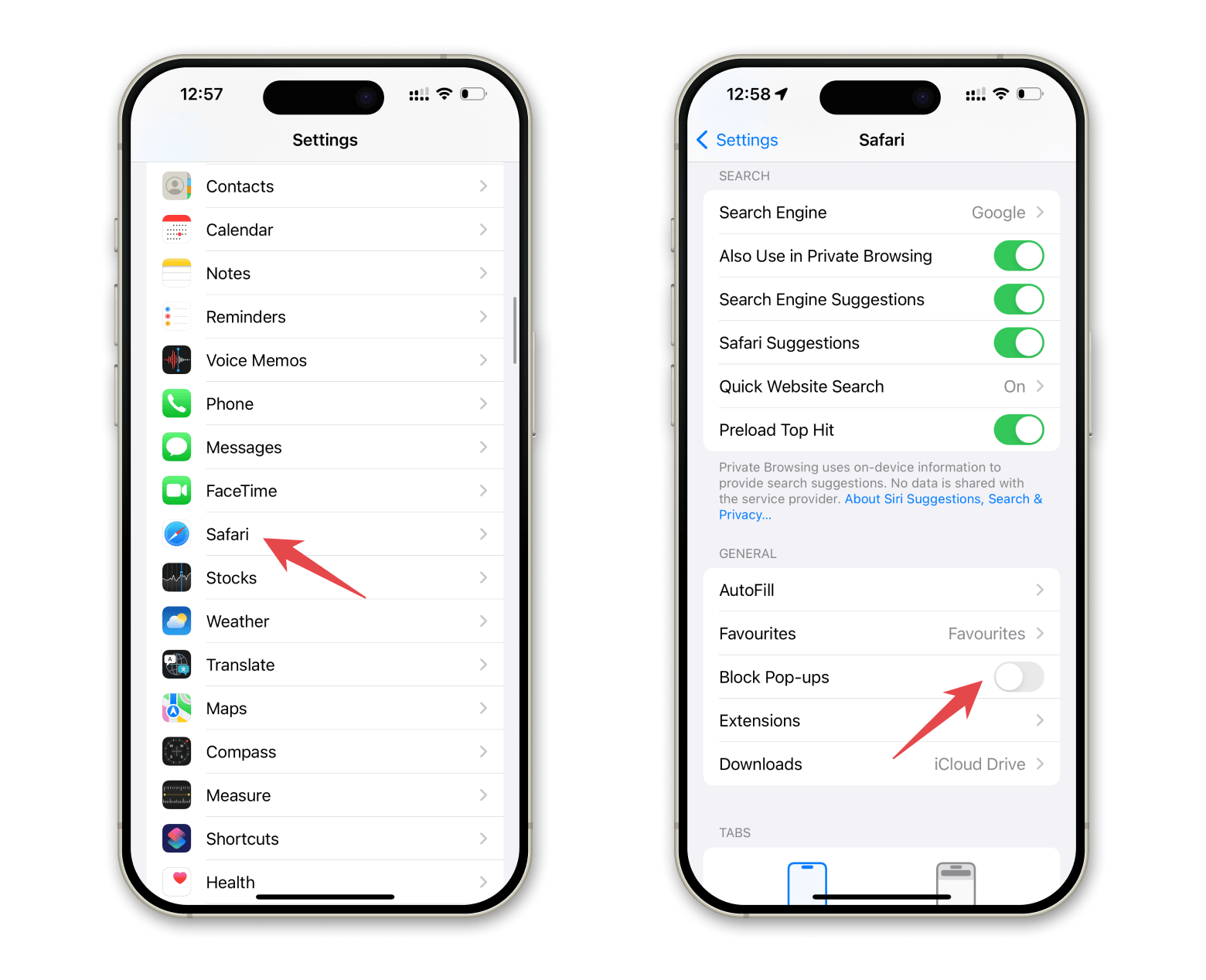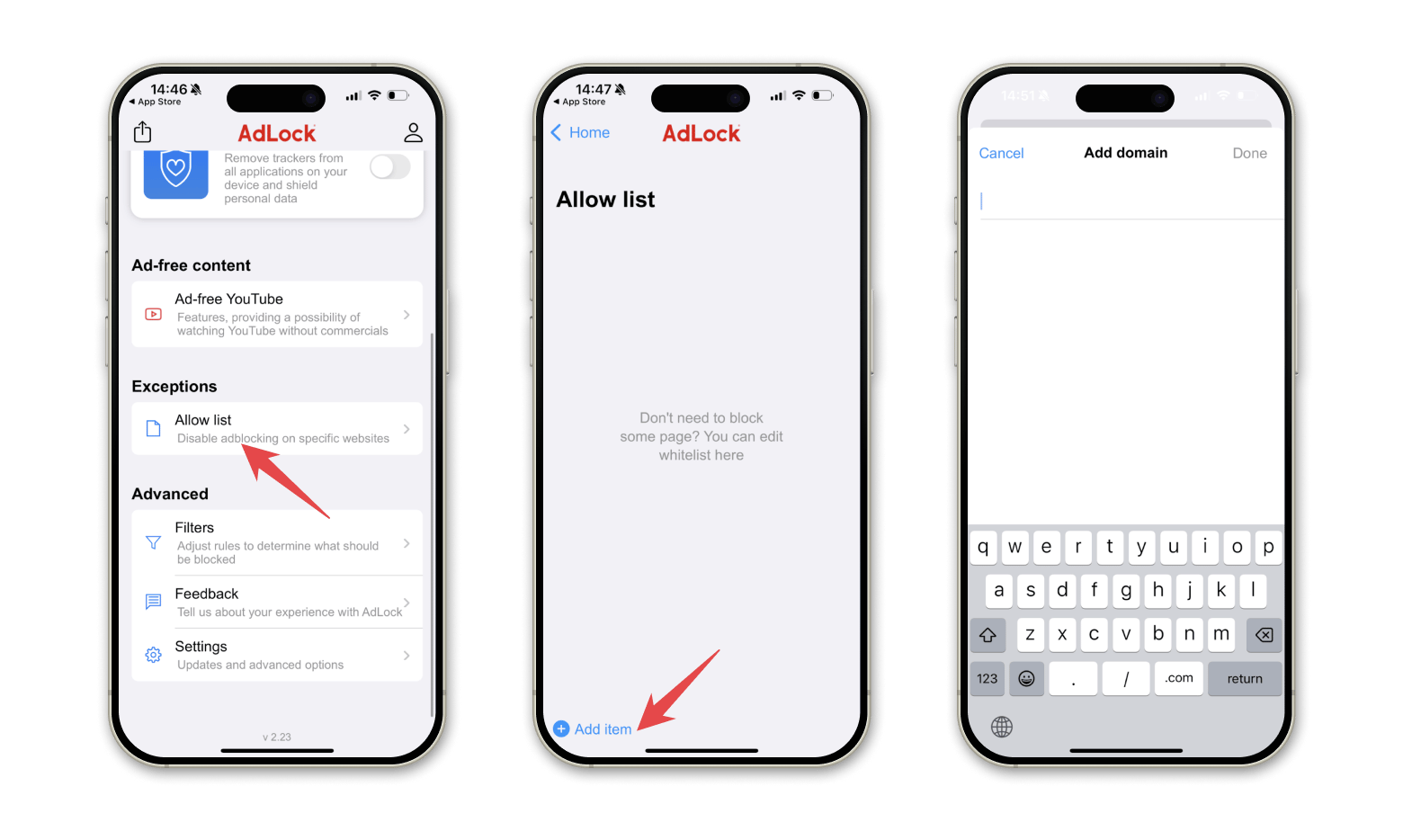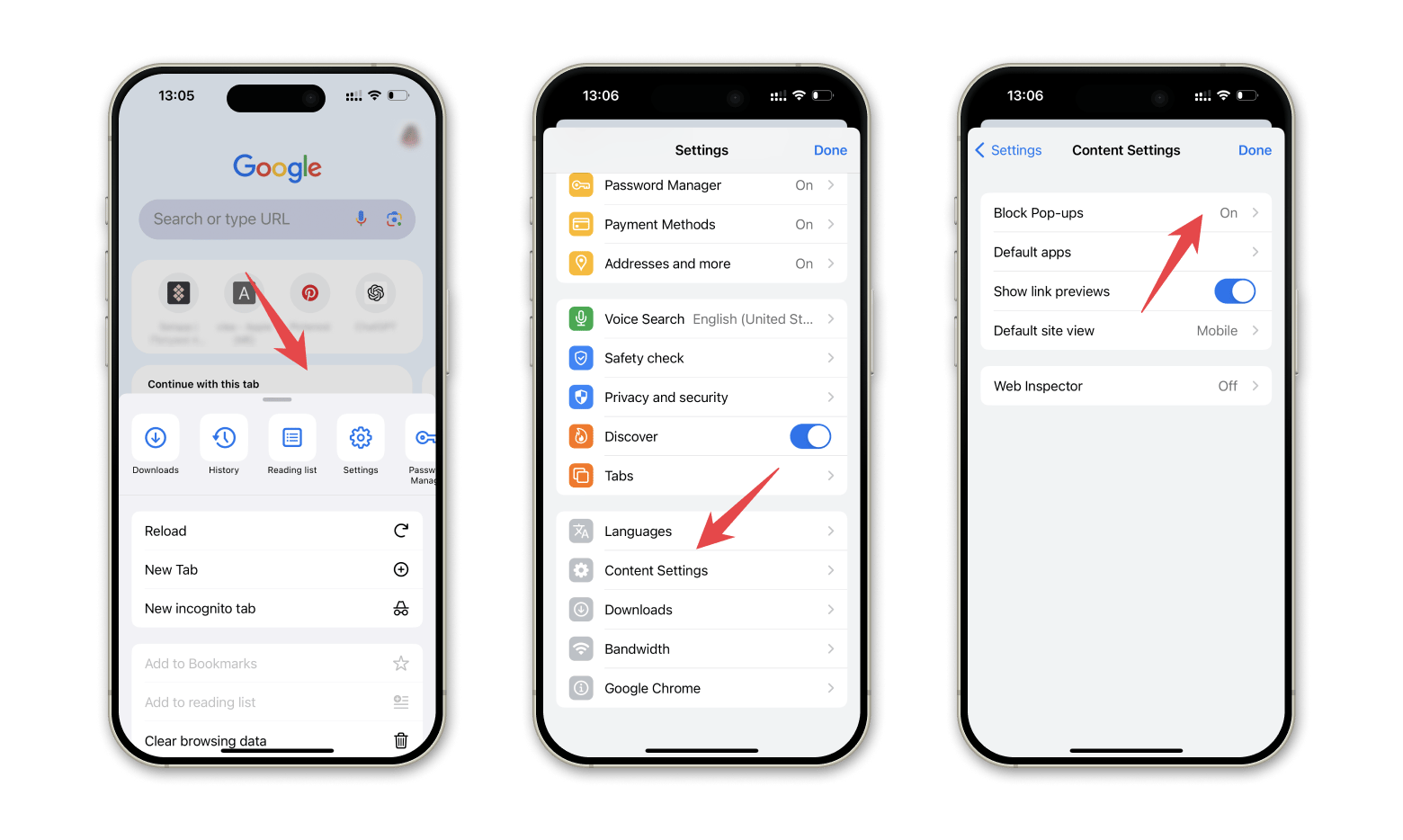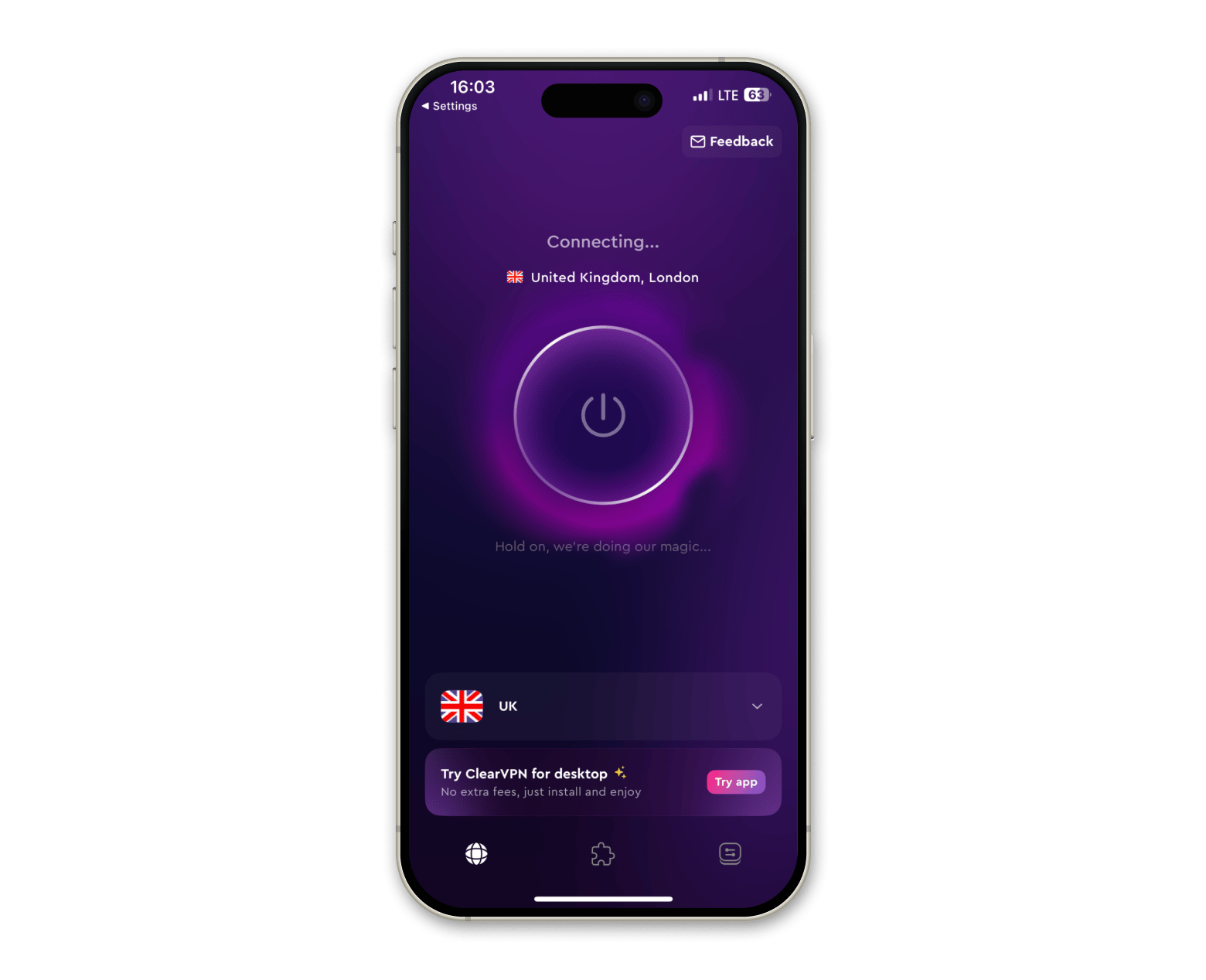How to turn off pop-up blocker on iPhone and iPad
- Pop-up blockers can interfere with some site functionality.
Sometimes, pop-up blockers prevent websites from downloading multiple files or accessing documents. - To enable pop-ups on iPhone or iPad:
In Safari, go to Settings > Apps > Safari and toggle off Block Pop-ups.
In Chrome, open the app, tap Settings > Content Settings > Block Pop-ups, and turn it off.
In Firefox, open Firefox > Hamburger menu > Settings > Browsing > Block pop-up windows. - Allow pop-ups for specific sites.
While Safari doesn’t allow per-site exceptions, AdLock lets you create an Allow List of sites that can show pop-ups while keeping others blocked. In Chrome, you can choose “Always show” for trusted websites when a pop-up is blocked.
- Access AdLock and 250+ other apps for free.
AdLock, ClearVPN tools — and many other apps for privacy, productivity, and customization — are available on Setapp. Start your 7-day free trial.
For me, the most common issue with pop-up blockers is when they prevent me from downloading multiple documents from an important website. In those cases, I have to go and allow them manually.
For you, the issue might be entirely different — but whatever your situation is, let’s go over how to enable pop-ups on your iPhone or iPad in just a few easy steps.
| Where do you need pop-ups? | Step-by-step to manage pop-ups |
| Safari (iPhone/iPad) |
1. Open Settings → Apps. 2. Tap Safari. 3. Turn off “Block Pop-ups.” |
| Chrome (iPhone/iPad) |
1. Open Chrome app. 2. Tap three dots (bottom right). 3. Swipe left and tap Settings. 4. Tap Content Settings. 5. Tap Block Pop-ups. 6. Turn off Block Pop-ups. |
| Chrome (Specific Sites) |
1. Open Chrome. 2. Go to the site. 3. At bottom, under “Pop-ups blocked,” tap **Always show**. |
| Firefox (iPhone/iPad) |
1. Open Firefox. 2. Tap hamburger menu (bottom right). 3. Select Settings. 4. Tap Browsing under General. 5. Toggle off “Block pop-up windows” under Media. |
| Custom ad/pop-up filtering |
1. Install AdLock from Setapp. 2. Open the app. 3. Go to Exceptions → Allow List. 4. Tap Add item → Add domain (for site-specific pop-up control). |
How to unblock pop-ups on iPhone
If you’re having trouble with a website’s functionality or feeling like you’re not seeing things as you should, here’s how to allow pop-ups on iPhone in the two most popular browsers and how to unblock pop-ups on iPhone only for certain websites.
How to enable pop-ups on Safari (iPhone and iPad)
Although the built-in pop-up blocker can be useful to block ads on your iPhone or get rid of distractions on your iPad, it’s good to know how to disable the pop-up blocker in Safari if you need to access specific content.
Here's how to turn off pop-up blocker on an iPhone:
- Open Settings > Apps.
- Tap Safari.
- Turn off Block Pop-ups.

Now, you can easily open new tabs and windows on those sites where you had trouble accessing content before!
A friendly reminder to update your Safari browserBeing up to date is so important in terms of security that we even included a question about it in our 2024 Scams and Disinformation Survey. We asked users: Do you regularly update your software and operating system? Here’s what they said: ♦ 55% — always (kudos to you!) Hopefully, that “always” group will keep growing! |
How to allow pop-ups to only certain websites on my iPhone
But wait, what if there was another in-between option that didn’t require you to completely turn on or turn off pop-up blocker on your iPhone? That’s right — there’s a way to gain more control over pop-up windows.
When I realized I didn’t have to go all out and could opt for a more flexible version, I searched far and wide for a suitable app and came across AdLock.
This is my genuine recommendation. The best way I could describe AdLock is that it acts as a filter. You can essentially tailor the app’s settings the way you want, down to deciding what type of content you’re interested in blocking and which you don’t.
Along with filtering parameters, you can even tailor your own list of sites you want to disable adblocking on, which is helpful if you’re looking to enable pop-ups for one website only, for example.
Here’s how to disable adblocking in specific websites:
- Install and open AdLock.
- Under Exceptions, tap Allow List.
- Tap Add item > Add the domain you need.

How to allow pop-ups in the Google Chrome app on iPhone or iPad
In addition to the Safari browser, many iOS device users typically download Google Chrome as a primary or secondary browser. Google Chrome also automatically has its pop-up blocker turned on, but if you want to allow pop-ups on Chrome for iPhone and iPad, you can follow these instructions:
- Go to the Google Chrome app.
- Tap the three dots in the bottom right corner.
- Swipe left on the list of icons and tap Settings.
- Tap Content Settings.
- Tap Block Pop-ups.
- Turn off Block Pop-ups.

How to allow pop-ups on certain websites in Chrome on iPhone or iPad
This method I described above allows all pop-ups, including potential ads or spam. But what if you only want to allow pop-ups on your favorite or trusted sites?
- Open the Chrome app on your iOS device.
- Go to the page where the pop-ups are blocked.
- At the bottom of the screen, under “Pop-ups blocked,” tap Always show.
This way, you’ll stay protected from unwanted pop-ups while still allowing them on the websites you know and trust.
Regardless of whether you choose to have a pop-up blocker toggled on or off in a given moment, it's useful to have another tool at your disposal to ensure your online safety at all times.
I never used a VPN until a few years ago, but now it's become a habit that I haven't broken. When I realized how much value a VPN had in my private browsing and security, I just never looked back.
I've tried a handful of VPNs in the past, but I eventually stuck to using ClearVPN, a macOS and iOS app, above those other, more well-known ones.

I find that it provides the quickest and most seamless way to avoid any harmful pop-ups and malware and protect my personal information — all I do is tap the button and it’ll assign me a new IP address. Or, I can choose my own server location from the list, which will also tell me which location is fastest.
This app has some cool extras like a strict no-log policy and a built-in Kill Switch that'll kick me off the internet if my VPN gets disconnected. It's definitely a must-have for anyone.

How to allow pop-ups in Firefox on iPhone and iPad?
To enable pop-ups in Firefox on a mobile device, follow these steps:
- Open the Firefox app, preferably on the start page.
- In the bottom-right corner, tap the hamburger menu (three horizontal lines).
- Select Settings.
- Tap Browsing under the General section.
- Find the Media menu and toggle off Block pop-up windows under it.
This should resolve any issues with pop-ups in Firefox. Interestingly, Firefox also lets you block images or prevent external apps from opening, adding extra layers of security to your browsing experience.
How to turn off pop-up blockers on iPhone and iPad: Final thoughts
Why disable the pop-up blocker on iPhone? Well, because not all pop-ups have to do with ads. Sometimes, as you might’ve discovered, pop-ups have everything to do with enhancing the user experience, whether they provide free promotional material or give you access to important files.
With apps like AdLock providing an ad-blocking service that puts control in the hands of the user, you won’t have to choose to disable or enable a blocker altogether but rather pick and choose where and what you want to block. Along with ClearVPN, you can enjoy much more customized and secure online browsing.
These apps and plenty more to take care of your privacy and security and elevate your digital experience can be found on Setapp. With a 7-day free trial, you can get a taste of 250+ macOS, iOS and web apps on this platform and see what the subscription service has to offer. Try today!
FAQ
Where is my pop-up blocker on my iPhone?
Let me be a little clearer here: by pop-ups, I don’t mean notifications — I mean those new tabs that open when you’re accessing a website on a web browser.
The pop-up blockers on the iPhone and iPad are already activated on the browsers you have downloaded. All iPhones and iPads have Safari as a default browser, but you can also download others, like Chrome.
On your iPhone and iPad, pop-up blockers are automatically enabled in the browsers you have installed. Safari is the default browser on Apple devices, but you can also use others like Chrome or Firefox.
Unlike Safari browser on a Mac, the settings for Safari are found within your device’s Settings app, where you can manage various options, including pop-up windows.
For other browsers, you may need to check within the app itself to find the pop-up blocker settings.
Can I allow pop-ups for a certain site in Safari on iPhone?
No, currently you can’t allow pop-ups for just one specific website in Safari on mobile devices — you have to use the global toggle in Settings > Apps > Safari > Block Pop-Ups.
However, if you’re okay with switching browsers, you can do it in Chrome. With pop-ups disabled, open the website where they’re being blocked. Scroll down to the bottom of the page, and under the “Pop-ups blocked” message, tap Always show.
My download doesn’t start; can pop-ups block downloads?
Yes, pop-ups can block downloads, because some sites start downloads through pop-ups. Others may allow you to download one item at a time, but require permission via a pop-up for multiple downloads (for example, this happens to Google services, like Google Docs.) The pop-up prompt typically appears in the upper-left corner of the screen. Allow the downloads, and they should continue. If it still doesn’t work, open Settings and allow pop-ups manually.
Do VPNs block pop-ups?
Typically, VPNs don’t block pop-ups unless they include a built-in pop-up blocker, which isn’t a common feature for VPNs.






